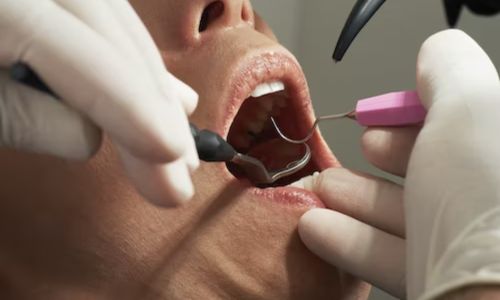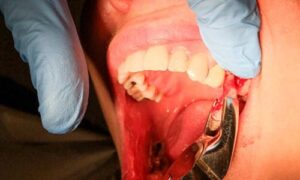If you’re looking to prevent cavities in your teeth, you might consider getting a dental sealant procedure. This simple and painless process involves applying a thin, protective resin layer to your teeth. But what exactly does the procedure entail? In this article, we’ll walk you through the steps of a dental sealant procedure and answer some common questions.
What are dental sealants?
Dental sealants are a preventive treatment that can help protect your teeth from cavities. The sealant is a thin coating made of plastic or resin that is applied to the chewing surfaces of your teeth, usually the molars and premolars. These teeth have deep grooves and pits that can be difficult to clean properly, making them more susceptible to decay.
How do dental sealants work?
Dental sealants are a simple and effective way to reduce your risk of tooth decay. When the sealant is applied to your teeth, it fills in the crevices and fissures, creating a smooth surface that is easier to clean. This helps prevent bacteria and food particles from getting stuck in the gaps and causing cavities.
Who can benefit from dental sealants?
Dental sealants are most commonly used in children and teenagers but can also benefit adults at high risk for cavities. If you have deep grooves or pits in your teeth, you may be a good candidate for sealants. Your dentist can help determine if dental sealants are suitable for you.
How to prepare for a dental sealant procedure
Preparing for a dental sealant procedure is straightforward. You don’t need to do anything special beforehand. Brushing your teeth and flossing before your appointment is good, but that’s about it.
The dental sealant procedure step by step
The dental sealant procedure is quick and painless, usually taking only a few minutes per tooth. Here’s what you can expect during the course:
1. Cleaning and preparing the teeth
The first step is to clean and prepare the teeth. Your dentist or dental hygienist will thoroughly clean your teeth to remove plaque or debris. They will then dry the teeth and isolate them with cotton or another material to keep them dry during the procedure.
2. Applying the sealant
Once the teeth are clean and dry, the dentist will apply the sealant to the chewing surfaces of the teeth. The bond is a thin, liquid-like material brushed onto the teeth and allowed to flow into the grooves and pits.
3. Curing the sealant with a special light
After applying the adhesive, your dentist will use a special light to cure it. The light activates the chemicals in the cement, causing it to harden and bond to the teeth.
After the procedure, you can resume normal activities right away. However, there are a few aftercare tips to keep in mind:
- Avoid eating or drinking anything for at least 30 minutes after the procedure to allow the sealant to harden fully.
- Be sure to brush and floss regularly to keep your teeth and sealants clean.
- Visit your dentist regularly for checkups and cleanings.
How long do dental sealants last?
Dental sealants can last for several years with proper care. Your dentist will check the bonds during regular checkups and can reapply them if necessary.
Are there any risks or side effects?
There are no significant risks or side effects associated with dental sealants. Some people may experience a slight sensitivity or discomfort after the procedure, but this usually goes away within a few days.
How much does a dental sealant procedure cost?
The cost of a dental sealant procedure varies depending on where you live and the dental office you go to. Dental sealants are an affordable option for cavity prevention, and many insurance plans cover the cost of the procedure.
Dental sealants vs. other cavity prevention methods
It is just one of many cavity prevention methods available. Other methods include fluoride treatments, regular brushing and flossing, and a healthy diet low in sugary foods and drinks. Your dentist can help you determine which practices are best for you.
FAQs
Is the dental sealant procedure painful?
No, the procedure is painless and does not require any anesthesia.
How long does the procedure take?
The procedure usually takes only a few minutes per tooth.
Can adults get dental sealants?
Adults can benefit from dental sealants if they are at high risk for cavities.
How long do dental sealants last?
Dental sealants can last for several years with proper care.
Are there any risks or side effects associated with dental sealants?
There are no significant risks or side effects associated with dental sealants.
Conclusion
A dental sealant procedure may be a good option to protect your teeth from cavities. This simple and painless procedure can help reduce your risk of tooth decay and is an excellent addition to your regular oral hygiene routine. Talk to your dentist to determine if dental sealants are suitable for you.














